
NGC 1532, also known as Haley's Coronet, is an edge-on barred spiral galaxy located approximately 50 million light-years from the Solar System in the constellation Eridanus. The galaxy was discovered by James Dunlop on 29 October 1826.

NGC 5921 is a barred spiral galaxy located approximately 65 million light-years from the Solar System in the constellation Serpens Caput. It was discovered by William Herschel on 1 May 1786. In February 2001 a type II supernova was discovered in NGC 5921. It is a member of the Virgo III Groups, a series of galaxies and galaxy clusters strung out to the east of the Virgo Supercluster of galaxies.
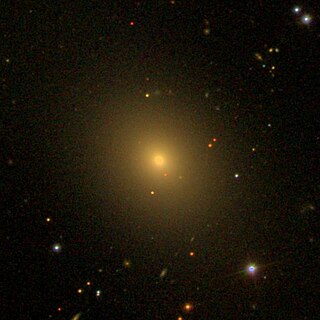
NGC 57 is an elliptical galaxy in the constellation Pisces. It was discovered on 8 October 1784 by astronomer William Herschel.

NGC 3953 is a barred spiral galaxy located in the constellation Ursa Major. It was discovered by Pierre Méchain on 12 March 1781. The galaxy is known to exhibit an inner ring structure that encircles the bar. NGC 3953 is a member of the M109 Group, a large group of galaxies located within the constellation Ursa Major that may contain over 50 galaxies.

NGC 5256 is an object that contains two disc galaxies, that are colliding into each other. It is located in the constellation Ursa Major, and was discovered by William Herschel on 12 May 1787. The two nuclei of the galaxies are separated by about 13,000 light-years. The southwest and northeast nuclei have masses of 7×109 M☉ and 10×109 M☉, assuming they orbit around a common center of mass. NGC 5256 is located at about 420 million light-years away from the Earth.
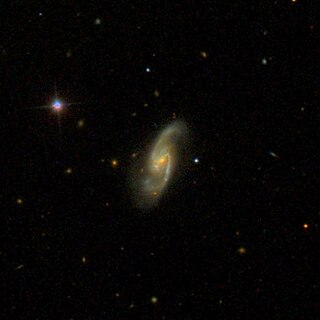
NGC 5001 is a barred spiral galaxy located in the constellation Ursa Major. It is designated as SB in the galaxy morphological classification scheme. It was discovered by John Herschel on 1 May 1831. It is at a distance of 130 million parsecs from the Earth.

NGC 6104 is a barred spiral galaxy located in the constellation Corona Borealis. It is designated as S(R)Pec in the galaxy morphological classification scheme, though it is clearly a barred spiral, and was discovered by William Herschel on 16 May 1787. The galaxy is approximately 388 million light-years away.

NGC 6181 is a barred spiral galaxy located in the constellation Hercules. It is designated as SB(rs)c in the galaxy morphological classification scheme and was discovered by William Herschel on 28 April 1788. The galaxy is 107 million light years away.

NGC 6221 is a barred spiral galaxy located in the constellation Ara. In de Vaucouleurs' galaxy morphological classification scheme, it is classified as SB(s)bc and was discovered by British astronomer John Herschel on 3 May 1835. NGC 6221 is located at about 69 million light years from Earth.

NGC 6373 is a barred spiral galaxy located in the constellation Draco. It is designated as SBc in the galaxy morphological classification scheme and was discovered by the American astronomer Lewis A. Swift on 13 June 1885. There are two recorded supernovae in this galaxy designated SN 2001ad and SN 2012an.
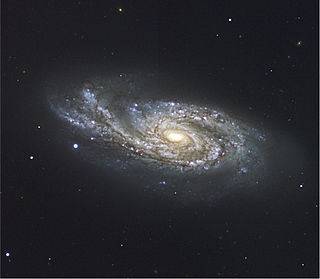
NGC 908 is an unbarred spiral galaxy in the constellation Cetus. It was discovered on 20 September 1786 by William Herschel. This galaxy is 56 million light years away from Earth. It is the main galaxy in the NGC 908 group, which also includes NGC 899, NGC 907, and IC 223.

NGC 132 is a spiral galaxy in the constellation Cetus. Its velocity with respect to the cosmic microwave background is 5015 ± 25 km/s, which corresponds to a Hubble distance of 241.3 ± 16.9 Mly (73.97 ± 5.19 Mpc). In addition, three non redshift measurements give a distance of 250.81 ± 2.14 Mly (76.900 ± 0.656 Mpc). It was discovered on 25 December 1790 by German-British astronomer William Herschel.

NGC 6801 is a spiral galaxy in the constellation of Cygnus. It was discovered by Lewis A. Swift on August 5, 1886.

NGC 7047 is an intermediate spiral galaxy located about 270 million light-years away in the constellation of Aquarius. NGC 7047 is also classified as a LINER-type galaxy. NGC 7047 has an estimated diameter of 127,350 light years. It was discovered by French astronomer Édouard Stephan on August 20, 1873.

NGC 7816 is a spiral galaxy located about 215 million light-years away in the constellation of Pisces. It was discovered by astronomer William Herschel on September 26, 1785.
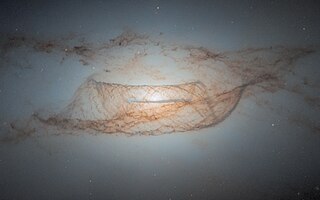
NGC 4753 is a lenticular galaxy located about 60 million light-years away in the constellation of Virgo. NGC 4753 was discovered by astronomer William Herschel on February 22, 1784. It is notable for having distinct dust lanes that surround its nucleus. It is a member of the NGC 4753 Group of galaxies, which is a member of the Virgo II Groups, a series of galaxies and galaxy clusters strung out from the southern edge of the Virgo Supercluster.
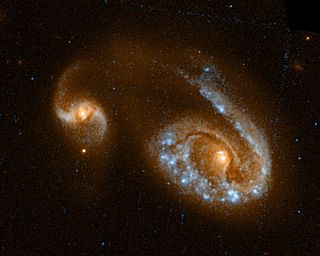
NGC 5278 is a spiral galaxy in the constellation Ursa Major. It was discovered by German-British astronomer William Herschel in 1789.

NGC 5504 is an intermediate barred spiral galaxy located in the constellation Boötes. Its speed relative to the cosmic microwave background is 5,482 ± 17 km/s, which corresponds to a Hubble distance of 80.9 ± 5.7 Mpc. NGC 5504 was discovered by French astronomer Édouard Stephan in 1880.
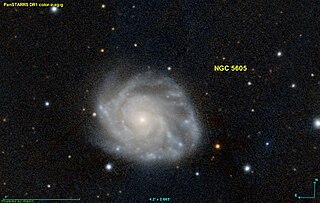
NGC 5605 is an intermediate spiral galaxy in the constellation of Libra. Its velocity with respect to the cosmic microwave background is 3635 ± 18 km/s, which corresponds to a Hubble distance of 174.9 ± 12.3 Mly (53.61 ± 3.76 Mpc). In addition, three non redshift measurements give a distance of 194.72 ± 0.68 Mly (59.700 ± 0.208 Mpc). The galaxy was discovered by German-British astronomer William Herschel on 11 May 1784.



















